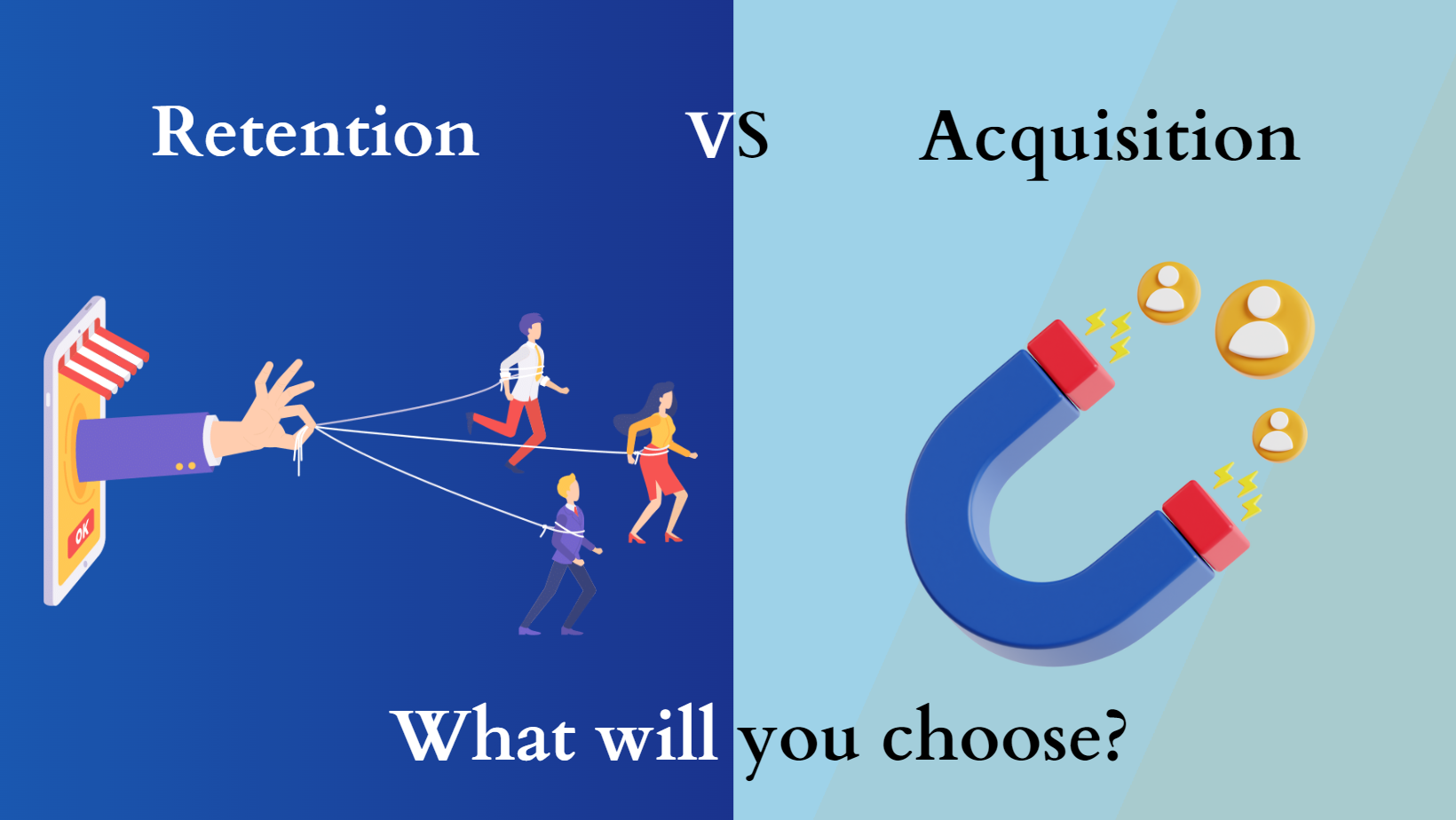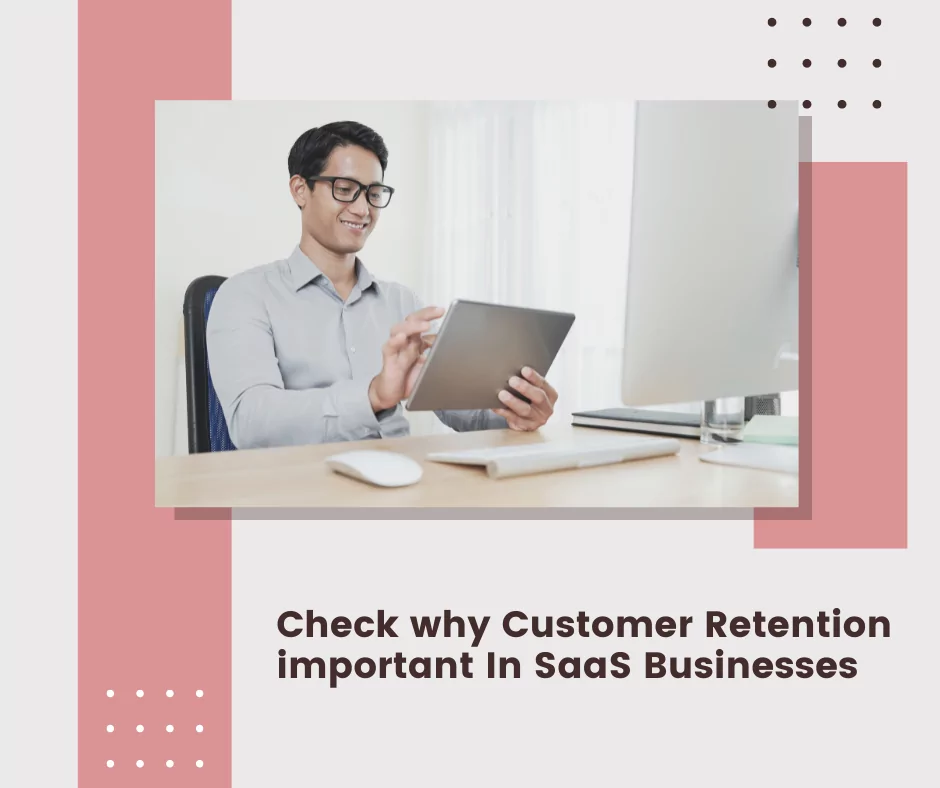Customer Retention v/s Customer Acquisition- Which one to choose?

“You cannot make progress without making decisions.” — Jim Rohn
Making the right choices make or break businesses. Customer retention and customer acquisition are two distinct strategies that businesses employ to grow and sustain their customer base. Guess what, you don't need to choose between customer retention and acquisition. Don't leave a sigh of relief yet, you still have a ground-breaking decision to make, which one to invest in more, as both play a critical role in your SaaS business's growth and sustainability.
This article will help you understand the importance of customer retention as well as acquisition and will answer the question of the day, which one will expand your SaaS business's horizons and lay the road towards success for you?
What is customer retention?
Customer retention focuses on maintaining and nurturing existing customers, ensuring they continue to make repeat purchases and remain loyal to the brand.
What is customer acquisition?
Customer acquisition refers to the process of attracting and converting new customers who have not previously engaged with the business.
The Focus of Customer Acquisition vs. Retention.
Customer Acquisition- The primary focus of customer acquisition is on reaching out to new potential customers, raising awareness about the brand, and convincing them to make their first purchase. Running a business in the first place means acquiring at least a few customers.
The customer acquisition process does just that allowing you to design, attract and sell your product to the potential customers. Thus expanding your horizons and fetching more opportunities to manage your SaaS business.
Customer Retention- Whereas, the primary focus of customer retention is to deliver an exceptional customer experience, build strong relationships, and provide ongoing value to retain customers over the long term. It is always a risk of customers churning out of the product if they don't find its value of preposition which attracted them initially.
One of the key components of successful customer retention is understanding your customers and their needs. You can boost revenue and further solidify your relationship with customers by identifying a likelihood for upselling and cross-selling.
Effort and Resources of Customer Acquisition vs. Retention.
Customer Acquisition- The success rate of selling to a customer you already have is 60-70%, while the success rate of selling to a new customer is 5-20%., says invesp.
Acquiring new customers often requires significant marketing efforts, it's exciting and its result is evident just by the calculation of numbers through CAC.
A successful customer acquisition strategy consists of three following parts:
- Attract leads who may or may not be aware of your product
- Nurture those leads until they become sales-oriented- Spending time on reaching out to them and explaining how the product is the right fit for their business
- Convert nurtured leads into customers- This requires multiple follow-ups, calls and convincing.
This can involve various channels, resources and strategies to reach a broader audience promoting your product.
Customer Retention
Increasing customer retention by 5% can increase profits from 25-95%. - Small business trends
Customer retention may not seem as exciting, but one needs to dive deep to understand how to retain customers as it may not be easily evident what might be the cause of poor retention. It may require measuring and analysing retention metrics that include customer churn rate, customer lifetime value, and repeat purchase rate. By tracking these metrics, businesses can identify areas for improvement and adjust their retention strategies accordingly.
Regarding resources, fewer resources are required to retain a customer. Retaining customers involves activities such as personalized communication, loyalty programs, excellent customer service, offering discounts, and post-purchase support.
It requires ongoing efforts to engage and delight customers, turning them into loyal customers who market your product through Word-of-Mouth. Studies show that loyal customers are worth up to 10 times their initial purchase value throughout their lifetime.
The Cost of Customer Acquisition vs. Retention.
Customer Acquisition- Acquiring a new customer can cost five times more than retaining an existing customer.
This shows customer acquisition can be expensive, due to the investments required in marketing, advertising, and sales activities to attract new customers, especially for small businesses with limited marketing budgets. The customer has to remain with the product for at least one to five years, depending on the price or product, for the product to start earning a profit through them.
Since these potential new customers aren't aware of your product, they may not trust you. So, it takes time and money to interest them in your product, and even more time and money to convince them to buy from you.
Customer Retention- Well, that's not the case with retention, according to Microsoft, loyal customers are 5x as likely to repurchase, 5x as likely to forgive, 4x as likely to refer, and 7x as likely to try a new offering.
So, you don't have to cross the same barriers as acquisition.
Customer retention is generally more cost-effective than acquisition since the business has already established a relationship with the customers. Retention efforts often involve lower marketing and advertising costs.
Additionally, existing customers are more likely to make repeat purchases and refer others to your business, which can lead to increased revenue and growth. Focusing on customer retention can ultimately save your business money and lead to long-term success.
The bottom line:
Both acquisition and retention need to be strategized based on the size of your business. While the acquisition may yield significant results in the initial phase bringing in new customers, it is retention that SaaS companies should focus their efforts more.
Why?
According to a study by Forbes, it is found that 65% of a company's business comes from existing customers, SaaS companies depending on subscription and recurring revenue, need repeat business more than any other sector.
In summary, both strategies are important for business success, but customer retention is often considered more cost-effective and beneficial in the long run due to the higher lifetime value and advocacy potential of retained customers. The best strategy for attaining overall business growth frequently entails a balanced approach that incorporates acquisition and retention techniques.
About us:
MYFUNDBOX is a subscription billing platform that helps businesses handle recurring billing and revenue management operations integrated with payment processing decacorns like Stripe, GoCardless, and Mollie.
MYFUNDBOX provides a single platform to enable customer-preferred payments globally and also is in partnership with Google Cloud.
It was started to help SaaS companies focus on their growth while we make sure they get paid securely and on time. We provide essential data and analytics necessary for both customer retention and acquisition. So, that businesses can make informed decisions on the growth of the business. We value our customer's feedback and prioritize to fulfill their demands, thus serving them better and bigger globally.
Book a free trial here!
Check out our customer's review here.


